There are currently over 29 affiliated and resident faculty members from 6 campus departments as well as from neighboring institutions.

Dr. Andrews is a Professor of the Cell Biology & Molecular Genetics (CBMG) department and an internationally recognized expert on the pathogenesis of intracellular protozoan pathogens (e.g. Trypanosoma cruzi). The Andrews’ lab has a long-term interest in unraveling unique aspects of the cell biology of intracellular infections, and in applying this knowledge to the characterization of fundamental survival strategies of mammalian cells.

Dr. Bentley’s research group is focused on the development of molecular tools that facilitate the expression of biologically active proteins. This includes manipulating bacterial signal transduction pathways for altering cell phenotypes. These concepts are emerging as a field of 'biofabrication' that exploits biological components and processes for assembly.

The Briken lab is interested in testing the hypothesis that the capacity of Mycobacterium tuberculosis (Mtb) to inhibit infection-induced apoptosis of macrophages is a major pathway of the bacteria to avoid the host’s innate and adaptive immune response. Their studies have the goal of understanding the molecular mechanism of this host-pathogen interaction. Until recently, the capacity of mycobacteria to inhibit macrophage apoptosis has been linked to bacterial virulence based only on correlative data due to the lack of defined bacterial mutants.
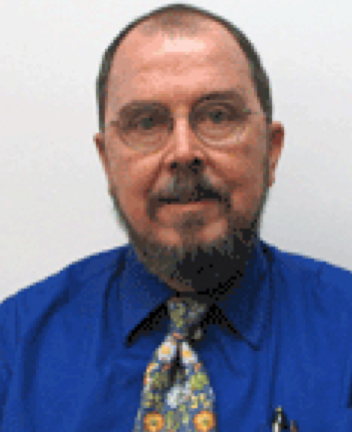
Dr. DeShong's research focuses on developing novel methods for the synthesis of biologically relevant compounds and applying these functionalized compounds/materials to biological situations using small molecule synthesis and medicinal chemistry. In collaboration with Drs. Stein (UMD) and S. Vogel (UMB), they have vaccine candidates against the bacterial pathogens F. tularensis and Salmonella under active development.

Dr. Dinman is a Professor and Chair of the Dept. of Cell Biology and Molecular Genetics. His research focuses on understanding the molecular mechanisms that guarantee accurate translation of the genetic code, how cells actively subvert this to regulate gene expression, and on the biomedical consequences of dysregulation of these processes. He has recently demonstrated that approximately 10% of human genes utilize a process called programmed -1 ribosomal frameshifting (-1 PRF) to control their expression, and that -1 PRF is controlled in a sequence-specific manner by the interaction of small noncoding RNAs with -1 PRF promoting signals present in mRNAs. He has also recently established a connection between dysregulation of -1 PRF in inherited diseases called ribosomopathies, as well as somatic mutations that underly cancers.In the field of virology, he has recently discovered a connection between miRNAs and -1 PRF in at least two viruses, HIV-1 and Venezuelan Equine Encephalitis Virus.

Dr. Duncan’s lab is interested in using nanotechnology and bioengineering as tools to broaden understanding of the lung airway microenvironment in order to develop state-of-the-art diagnostic and therapeutic approaches. This includes the host-pathogen interactions during respiratory infections such as influenza.

Dr. Najib's research program is focused on the study of the biology of parasitism and host-pathogen interactions using genomic approaches with the ultimate goal of better understanding infection and survival mechanisms. These approaches include the development and application of molecular, computational and phylogenetic tools. In the long term, our research will contribute to better diagnosis, prevention and therapeutics of parasite- and bacteria-caused diseases in humans, animals and plants.

The Hall lab is fascinated by the possibility to modulate microbiome in a manner that is challenging to do with the human genome itself. Dr. Hall believes that the human gut is a nexus of immune-microbiota interactions that developed millions of years of co-evolution resulting in a complex chemical conversation between the gut microbiota and the host immune system. Imbalance in these chemical conversations are likely drivers of negative health outcomes such as IBD. The Hall lab seeks to utilize experimental approaches in molecular biology and systems biology to understand the contribution of the gut microbiome to gut homeostasis specifically as well as computational modeling to understand the complex host-commensal interactions in the gastrointestinal tract.

Dr. Hamza's research focuses on metal homeostasis and its interrelationship to human health and disease. His studies seek to address two questions pertaining to global iron deficiency. (a) What are the molecules and mechanisms involved in heme absorption in humans? (b) Can we identify these transporters in parasitic worms and design drugs that can target this heme transport system.

Our research aims to uncover new insights into vascular and pharmaceutical biology and to apply these to design and create new biotherapeutics. We also strive to develop new approaches to drug delivery and tissue engineering using fundamental tools from both engineering and biology. Employing techniques in protein engineering, biomaterials, molecular biology and nanotechnology; we are interested in projects at the interface of vascular biology and bioengineering with the objective of generating new therapies that can ultimately be translated to clinical use. An underpinning goal of the lab is to endow trainees with the skills and knowledge necessary to become leaders in the biotechnology and pharmaceutical industries.

The goal of the Jewell lab is to develop biomaterials that generate immune responses with specific, tunable characteristics. Our research has two complementary components: 1) basic investigations to understand the interactions between synthetic materials and specific immune cells and tissues, and 2) design of biomaterial-based vaccines that tune or modulate immune responses to combat target infectious diseases and autoimmune disorders (e.g., multiple sclerosis, type I diabetes). This idea of tuning immune response is called "immunomodulation" and we use biomaterials that range from degradable polymer particles, to lipid carriers, to nanostructured polyelectrolyte multilayers. We study these materials in cells and animal models, incorporating tools from chemistry, engineering, basic biology, and immunology.

Our lab engineers proteins and peptides to specifically recognize proteins and cells with the goal of enhancing the understanding of fungal disease and developing tools for fungal disease diagnosis and antifungal drug design. Fungal infections are a serious medical concern for patients with compromised immune systems, such as patients undergoing chemotherapy or patients with HIV or AIDS. A limited number of antifungal drugs are available to treat fungal disease, and the use of these drugs can be limited by resistance to the drugs or by toxicity of the drugs. We use protein-engineering strategies, including both rational design and directed evolution, to design protein and peptides tools that allow us to evaluate new antifungal drug targets and engineer increased specificity of antifungal agents. We are also interested in developing diagnostic tools to improve the detection and identification of fungal pathogens.

The Kjellerup lab has pioneered the application of biofilms on sorptive materials for bioremediation and energy recovery from wastewater. Dr. Kjellerup’s lab has used these materials, along with chemical analysis, to develop novel bioremediation strategies and approaches for groundwater and stormwater clean-up for toxic substances such as polychlorinated biphenyl. In addition, The Kjellerup lab has studied biofilms during infections by utilizing a Caenorhabditis elegans model. This has allowed studies into biofilm-based infections for bacterial and fungal pathogens including Staphylococcus epidermidis, Streptococcus agalactiae and Candida albicans.

The research program in the LaRonde laboratory is focused on using structural, biochemical and biophysical techniques to understand protein function in various processes. The lab has been heavily involved in research of the protein-protein and protein-RNA interactions in the process of biogenesis of the eukaryotic ribosome, and has contributed to the study of protein assemblies and function in mycobacterial pathogenesis.

Dr. Lee's research interests include host-pathogen interactions, in particular, molecular mechanisms of pathogenesis for Pseudomonas aeruginosa, chronic biofilm-based infections, bacterial signal transduction and allosteric regulation of molecular complexes.

The Ling lab is interested in the effect of oxidative stress on translational fidelity, editing mechanism by aminoacyl-tRNA synthetases, and the impact of translational errors on human diseases. The Ling lab is advancing proteomic techniques to allow systems-level detection of mistranslation in the proteome. The Ling lab is also collaborating in multidisciplinary studies to understand how the genetic code can evolve in order to permit synthetic biology and the generation of proteins with additional side groups and functionality.

Research in our laboratory is directed at understanding the molecular basis of ligand recognition by cell surface receptors of the immune system. Several classes of recognition molecules are under study: antibodies, T cell receptors (TCRs), natural killer (NK) cell receptors, and variable lymphocyte receptors (VLRs).

Dr. McIver's research program focuses on the molecular mechanisms by which pathogenic streptococci as well as other Gram-positive bacterial pathogens (e.g., MRSA, Enterococcus) regulate their virulence repertoire in response to host signals. The group A streptococcus is an important pathogen strictly limited to infections of humans, eliciting primarily self-limiting purulent infections (strep throat) as well as severe and often fatal invasive disorders (necrotizing fasciitis, streptococcal toxic shock syndrome).

Dr. Mosser is the Founding Director of MPRI and Professor, Cell Biology and Molecular Genetics. The research interests in the Mosser lab include innate and adaptive immunity to microbial pathogens. The studies on host defense to infectious diseases focus on the cell and molecular biology of macrophage infection by intracellular pathogens, and the molecules produced by macrophages that mediate the killing of intracellular pathogens. The studies pertaining to the molecular regulation of cytokine production by macrophages have led to the identification of new epigenetic modifications associated with cytokine gene expression in macrophages.
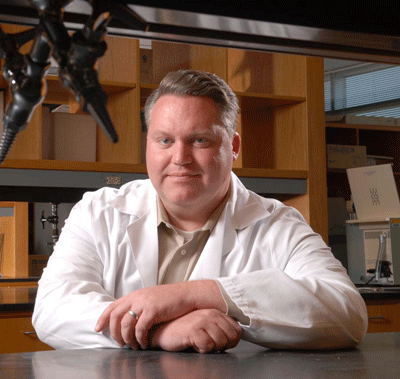
Dr. Nelson holds a joint appointment between the Department of Veterinary Medicine in College Park, MD and the Institute for Bioscience and Biotechnology Research (IBBR) in Rockville, MD. His laboratory is physically located in Rockville, but he splits his time between offices at both locations. The Nelson laboratory studies several proteins derived from bacteriophage that possess an inherent antimicrobial potential against both human and animal pathogens. Ongoing projects include: •Structure/function studies of bacteriophage endolysins •Thermodynamic engineering of endolysins •Measuring endolysin kinetics •Use of bacteriophage proteins for bacterial diagnostics •Rapid dispersion of polymicrobial biofilms with bacteriophage depolymerases •Strategies to re-sensitize vancomycin-resistant Staphylococcus aureus to vancomycin •Engineering PlyCB, an endolyisn, for use as a novel implant coating •Non-invasive thermal ablation of bacteria using functionalized nanoparticles

Dr. Pal's research focuses on the mechanisms by which arthropod-borne pathogens persist in nature, and use that information to interfere with the infection. Current efforts involve the tickborne pathogen Borrelia burgdorferi, which elicits a multi-system disorder in humans and animals known as Lyme disease. The ongoing studies include the following: Antigens critical for transmission and virulence: Using high-throughput expression analysis, borrelial genes have been identified that are dramatically induced during critical phases of the B. burgdorferi life cycle, including tick-to-mouse transmission, establishment of infection in murine hosts and the induction of inflammatory disease.

Dr. Pop's research is focused on two broad scientific questions: the analysis of microbial communities (metagenomics), and genome analysis using new high-throughput experimental techniques (including short-read sequencing and high-throughput mapping technologies). In metagenomics, Dr. Pop's lab is actively involved in the development of new algorithms for uncovering genomic variation within microbial communities, as well as in the development of analysis tools for clinical data-sets comprising hundreds or thousands of patients.
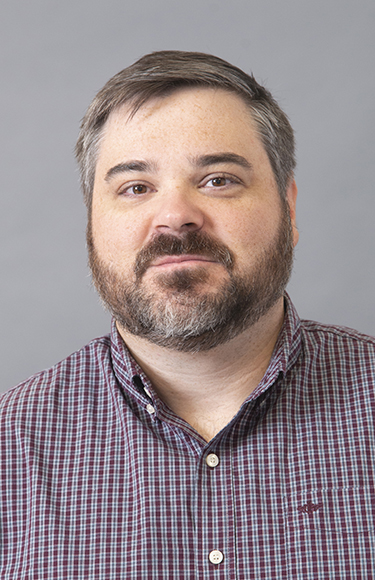
Dr. Riley is interested in intracellular pathogens, host immune responses and transmission by insect vectors. Dr. Riley’s lab will utilize a number of approaches including molecular biology, vector biology, animal infection models, cellular microbiology, and microscopic imaging to dissect Rickettsia-host interactions and test possible prophylactic/ therapeutic interventions to treat rickettsial infections.

The Scull lab combines transcriptomics, viral genetics, and in vitro primary cell model systems to understand innate defense against respiratory viruses. Our work focuses on the airway epithelium – the primary target for infection by respiratory viruses and also our first line of defense at the interface between the external environment and underlying tissues. We have previously shown that innate defense mechanisms in the airway epithelium limit infection by clinically relevant human respiratory viruses. Still, a comprehensive analysis of the airway epithelial antiviral response in primary human cells is lacking, and the specific contribution of individual populations of cells to this response remains unknown. Current work in the lab takes advantage of unbiased RNA-seq technology to first define, then compare and contrast host gene signatures in the airway following infection with influenza virus, parainfluenza virus, rhinovirus, or coronavirus. Our in vitro model of human ciliated airway epithelium also provides unique opportunities to tackle questions regarding the heterogeneity of the host response during infection across different cell types and between infected and uninfected cells. Additional efforts in the Scull lab are geared toward developing tools, including virus and cell-based reporters, to visualize and dissect the dynamics of infection and the host response at the single-cell level. Our overall goal is to reveal novel mechanisms of critical host-pathogen interactions, understand the roles of specific cell populations during pathogenic insult, and translate these findings to understand why infections are often worse in individuals with pre-existing lung disease.

Dr. Shi’s laboratory researches the intravascular immune responses to Cryptococcus neoformans and Trypanosoma brucei, as well as their transmigration into the brain across the blood-brain barrier. Dr. Shi’s laboratory has developed a mouse model system based on intravital microscopy (IVM) to study the dynamic interactions of host cells with the pathogens in living hosts. Another area of interest within Dr. Shi’s lab is role of cytokines in the immunopathogenesis of infection with C. neoformans and T. brucei.

The goal of Dr. Song's research is to understand the cellular mechanism by which gonococci colonize on, invade into, and transmigrate across the genital epithelium and identify host factors that can regulate these processes. The lab has recently identified epidermal growth factor receptor as a host signal transduction pathway that is hijacked by the bacteria for their invasion into genital epithelial cells. The lab is currently studying the interaction of gonococci with the apical junctional complexes, which potentially allows the bacteria transmigrate across the epithelium.

Dr. Stein's research is focused on understanding the how the human pathogen, Neisseria gonorrhoeae causes disease. His research emphasizes cell biology, immunological and molecular genetic approaches to bacterial virulence. He has used database mining to identify important virulence genes in pathogens and has taken a novel approach in pathogen study by analyzing the genomes of nonpathogenic Neisseria sp., in the hope of identifying virulence determinants.
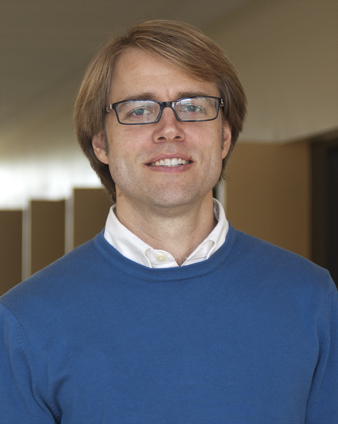
All organisms must regulate the expression of their genes. Oftentimes, these regulatory processes are responsive to specific chemical and physical cues. The overreaching goal of our laboratory is to discover new classes of such regulatory circuits and to reveal their underlying molecular mechanisms. We focus in particular on signal-responsive regulatory RNAs, which offer sensitive, accurate and rapid means for modulating gene expression. Also, our knowledge on RNA-based regulatory mechanisms has become sufficiently informed that we are beginning to pursue their synthetic applications.
Immune responses at mucosal surfaces, including respiratory, gastrointestinal, and urogenital tracts, play a pivotal role in host defense against mucosally-transmitted pathogens as well as in the pathogenesis of acute and chronic mucosal inflammatory diseases. The overall goal of our laboratory is to define adaptive and innate immune responses at mucosal surfaces, examine the molecular mechanisms underlying their regulations, explore the unique mechanism by which mucosal immune responses contribute to mucosal defense to pathogen invasion, progression of inflammatory diseases, and development of mucosal vaccine. Specifically, we are functionally 1) characterizing MHC class I-related molecules with a particular focus on understanding how FcRn transports and protects IgG by using transgenic and knockout mouse model.

